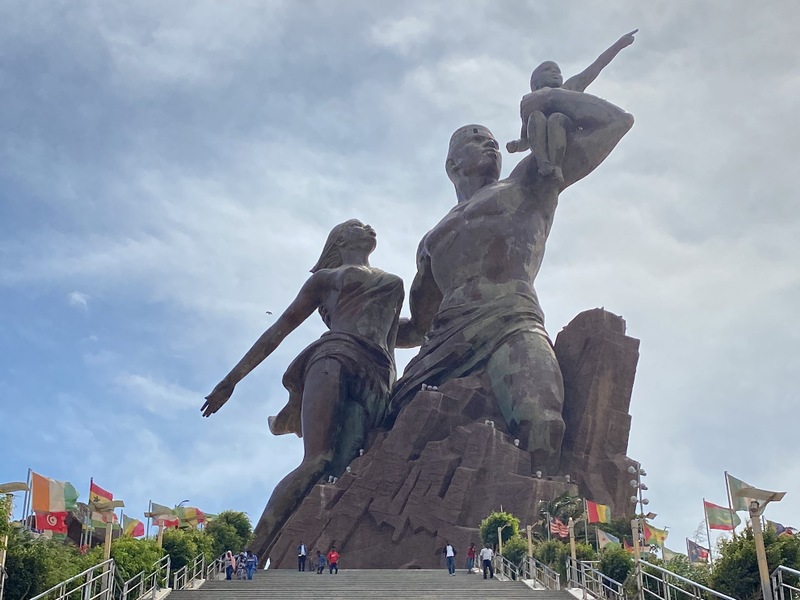Image: African Renaissance Monument in Dakar, Senegal. Arianepare, CC BY-SA 4.0
African architecture is experiencing a renaissance, driven by visionary architects and designers, blending traditional cultural elements with modern design principles, to create spaces that resonate with history, identity, and social justice. Their work not only enhances the physical environment but also challenges conventional narratives, making a profound impact on how communities engage with their surroundings.
Here are the top five African architects and designers making waves in their profession;
1. Pierre Goudiaby Atepa is a renowned Senegalese architect and sculptor known for his significant contributions to African architecture and urban planning. Atepa was born in 1947 and has been a prominent figure in architecture for decades, with a portfolio that includes various high-profile projects across Africa and beyond. He is known for blending modern architectural styles with African cultural elements, thereby promoting African identity through his works.
One of his most iconic works is the design of the African Renaissance Monument in Dakar, Senegal, which stands as a symbol of African pride and resurgence. The 49-meter (160-foot) bronze statue is the tallest in Africa, towering over the capital city of Dakar from a hill overlooking the Atlantic Ocean. It was commissioned by Senegalese President Abdoulaye Wade and designed by Pierre Goudiaby Atepa, though the construction was carried out by a North Korean firm, Mansudae Overseas Projects, which specializes in large monuments.
The statue depicts a man, woman, and child emerging from a volcano. The man represents African strength, determination, and leadership, the woman represents African unity, resilience, and support, and the child represents the future of Africa.
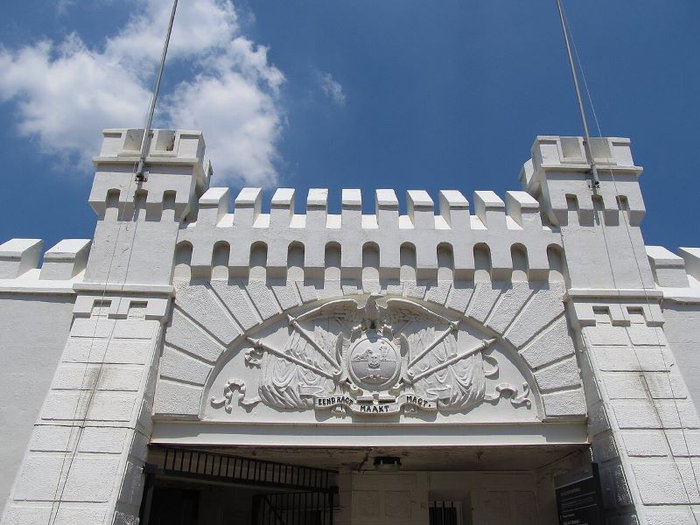
Image: Coat of Arms on the gate of Constitution Hill, South Africa. Steamhunter, CC BY-SA 3.0, via Wikimedia Commons
2. Mphethi Morojele is a distinguished South African architect known for his innovative and culturally sensitive architectural designs. He is the founder of MMA Architects and his work often reflects a deep understanding of the social, political, and historical contexts of the spaces he creates.
One of Morojele’s most significant projects is the redevelopment of Constitution Hill in Johannesburg, South Africa. This site is a powerful symbol of South Africa’s journey from a history of oppression to a future of democracy and human rights. Constitution Hill is a heritage site that was once a notorious prison complex, housing both political prisoners and common criminals during apartheid and colonial rule. It is now the seat of the Constitutional Court of South Africa, the highest court in the country, which upholds the rights and freedoms enshrined in the South African Constitution.
Some key elements of the building include its design to be open and accessible, with large windows symbolizing transparency and justice. It also incorporates materials from the old prison, such as bricks and iron bars, to connect the past with the present, serving as a reminder of the site’s history. The court also features artwork by South African artists, including the famous “Justice Under a Tree” sculpture, which references traditional African ways of resolving disputes under the shade of a tree.
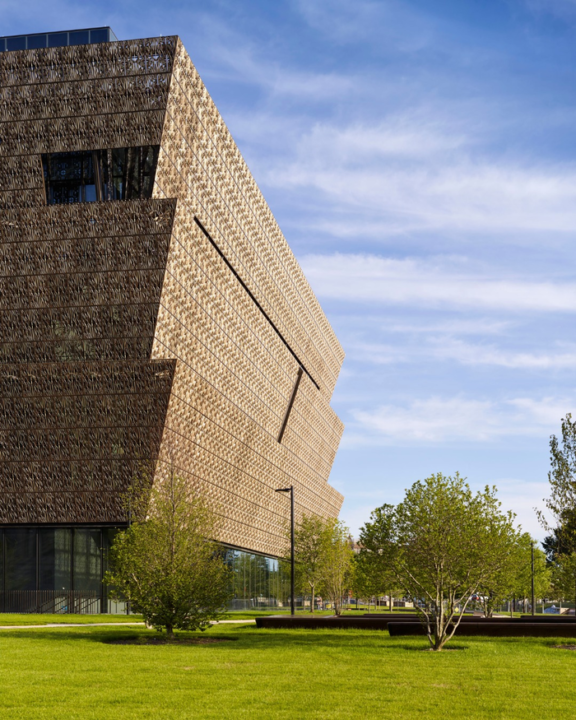
Facebook | Smithsonian National Museum of African American History and Culture.
3. David Adjaye is an internationally renowned architect known for his innovative designs that blend contemporary aesthetics with deep cultural and historical narratives. He was born in Tanzania, in 1966, to Ghanaian parents.
One of his most celebrated works is the 400,000 square feet National Museum of African American History and Culture (NMAAHC) in Washington, D.C. This museum, part of the Smithsonian Institution, stands as a testament to the African American experience and has become a significant cultural landmark in the United States. David Adjaye led the design of the NMAAHC in collaboration with a team of architects from Freelon Adjaye Bond/SmithGroup, including Philip Freelon, who was the lead architect. The design was selected through an international competition, and Adjaye’s proposal stood out for its bold concept and cultural symbolism.
Adjaye continues to work on projects that address social issues and celebrate cultural diversity, solidifying his legacy as an architect who uses design to make a positive impact on society. In addition to the NMAAHC, Adjaye has worked on other notable projects, such as The Smithsonian National Museum of African Art (Washington, D.C.), the Sugar Hill Development (Harlem, New York), the Côte d’Ivoire Parliamentary Complex and the Ghana National Cathedral (Accra, Ghana).
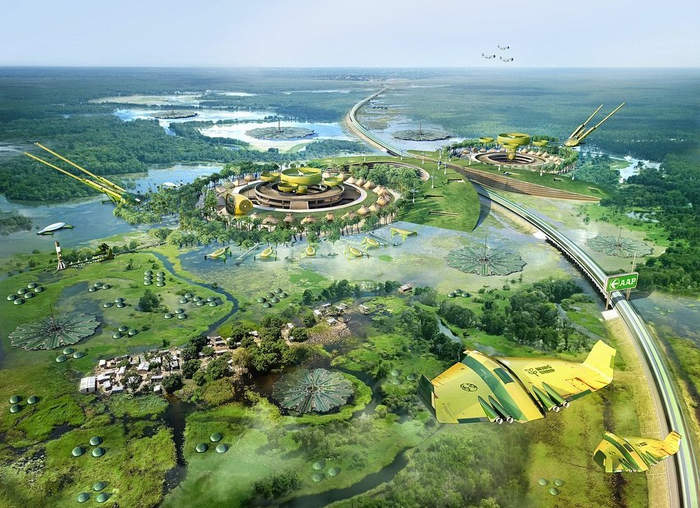
Image: Olalekan Jeyifous’ ACE/AAP installation at the Venice Biennale. Instagram | Olalekan Jeyifous
4. Olalekan Jeyifous is a Nigerian-born, Brooklyn-based visual artist and designer known for his imaginative and thought-provoking work that often explores themes of architecture, urbanism, and Afrofuturism. He is known for his unique blend of architectural principles with futuristic and socially conscious narratives, often exploring the intersections of technology, culture, and the environment.
One of his notable projects is the “Shoreline Project,” St. Louis, Missouri, USA which is a conceptual and public art installation that merges art, history, and activism to reimagine the relationship between communities and their urban environments, particularly along waterfronts. The Shoreline Project is a public art installation that was part of the Counterpublic Triennial, a major public art exhibition in St. Louis, Missouri, that took place in 2023. The project sought to explore and reimagine the history and future of the St. Louis waterfront, specifically focusing on the areas that have been impacted by industrialization, environmental degradation, and social inequities.
The Shoreline Project also serves as a reflection on the historical displacement of communities, particularly African American and indigenous populations, along the St. Louis waterfront. The installation includes references to the Cahokia Mounds, an ancient Native American city near present-day St. Louis, as well as the more recent history of urban renewal projects that displaced many Black communities.
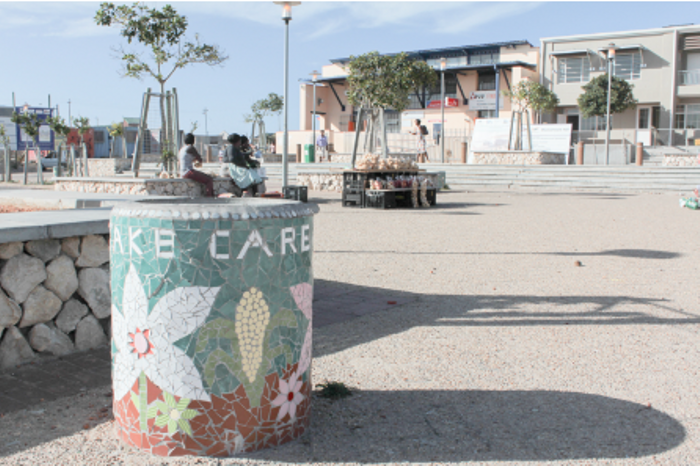
Image: Khayelitsha, Cape Town, South Africa. Source: World Landscape Architect
5. Mokena Makeka is a prominent South African architect, urban designer, and academic known for his contributions to contemporary African architecture and urbanism. Born in Lesotho and raised in South Africa, he is the founder of Makeka Design Lab. His work often explores the intersection of architecture, culture, and social justice, with a focus on creating inclusive and sustainable urban environments.
One of his significant projects is the Harare Square in Khayelitsha, Cape Town, South Africa, which reflects his commitment to urban regeneration and community-oriented design. The design of Harare Square reflects Mokena’s philosophy of creating spaces that are not just functional but also socially meaningful and culturally resonant. The project aimed to transform a previously underutilized and neglected area into a vibrant community hub that serves the diverse needs of the local population.
The design, which is deeply rooted in the context of Khayelitsha, reflecting the local culture, needs, and aspirations of the community, has also become a model for similar projects in other parts of Cape Town and beyond.
Mokena has worked on a wide range of projects that address issues of social justice, cultural identity, and environmental sustainability.

Victoria Ezechukwu-Nwagwu is a dynamic communications professional and the Executive Assistant to the Publisher of FunTimes Magazine. she brings a strong foundation in media, strategic communication, and organizational leadership.
Victoria is passionate about continuous learning and driving creative innovations that enhance engagement and impact. Her dedication to excellence and keen eye for detail make her an invaluable asset in fostering collaboration and executing high-level initiatives.

